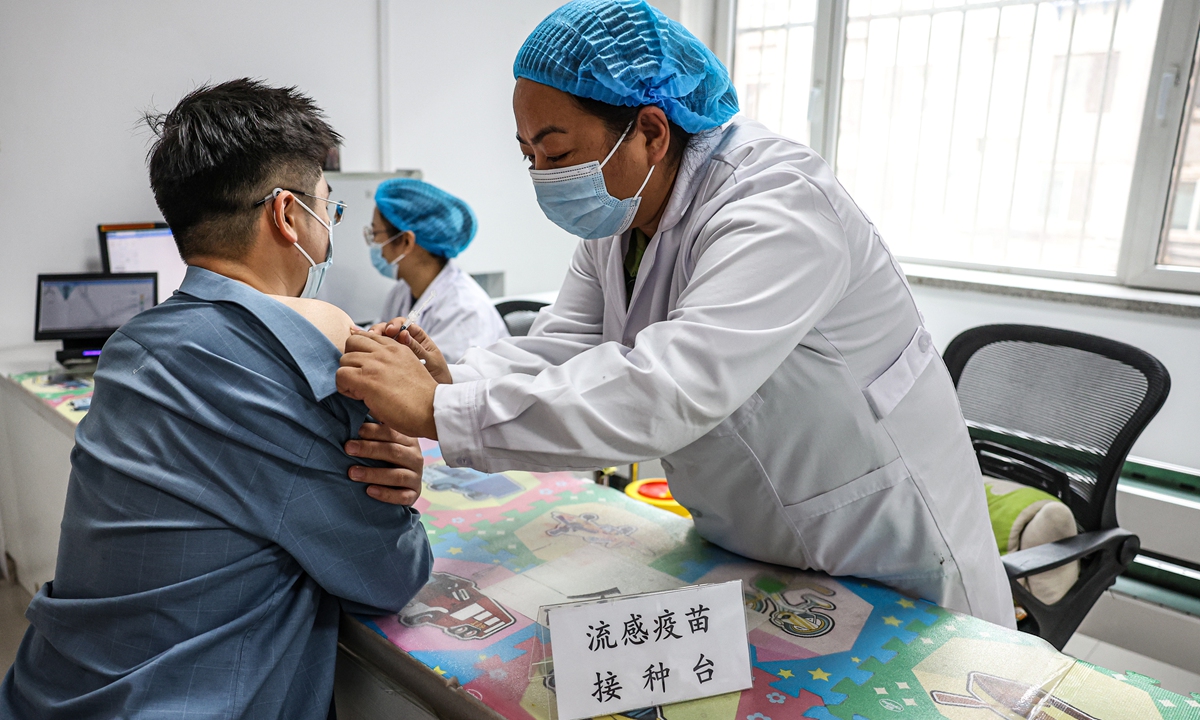Infection
Current respiratory cases caused by known infectious agents: China’s top health authority
A resident receives a flu vaccine at a community health service center in Shenyang, Northeast China’s Liaoning Province, on November 15, 2023. Respiratory diseases have progressed to their peak period of incidence across China, posing a threat to vulnerable groups such as children and the elderly. Photo: VCG
The respiratory cases that are currently being reported by the country’s monitoring and hospital systems were caused by already known infectious agents, China’s National Health Commission (NHC) said on Friday, after the World Health Organization (WHO) expressed concern over the country’s increasing respiratory illnesses and reported clusters of pneumonia in children.
NHC said at a Friday press conference that it held an online video conference with the WHO over respiratory infectious diseases on Thursday. Experts from China’s National Administration of Disease Prevention and Control, Chinese Center for Disease Control and Prevention, and National Children’s Medical Center present at the meeting outlined the recent epidemic trend, pathogen monitoring, clinical diagnosis and treatment, as well as health education in China.
The country has seen a spike in respiratory infectious diseases including influenza, mycoplasma infection and pneumonia.
In a notice issued by China’s State Council on effectively preventing respiratory infectious diseases on Friday, it warned that during the winter and the coming spring, China may face a situation in which several respiratory diseases, including COVID-19, flu, and mycoplasma could overlap and prevail.
“The overall situation of COVID-19 is generally stable currently, but there is a risk of a rebound in the winter. Also, influenza and mycoplasma pneumoniae infection has become worse since October 2023. Influenza infection may reach its peak during the winter and spring seasons nationwide, and mycoplasma pneumoniae infections will continue to be high in some areas for some time,” said the State Council.
The State Council required monitoring to be enhanced in key places likes borders, schools and nursing homes, to effectively monitor for major infectious diseases such as COVID-19, influenza, and norovirus gastroenteritis, and for medical resources to be prepared.
NHC said that it has guided medical institutes across the country to implement hierarchical medical diagnosis mechanisms and to enhance the capacity of primary-level healthcare institutions in treating common infections and transferring more severe cases.
Local governments were also urged to provide information about medical institutions that can provide pediatric diagnosis and treatment services so that the public can go to nearby hospitals.
Mycoplasma infection, influenza and adenovirus infection are among the common respiratory diseases currently prevalent in China. Recently, the number of patients infected with mycoplasma has been declining, but other respiratory viral infections such as influenza are on the rise, media reported, citing respiratory experts.
Global Times

